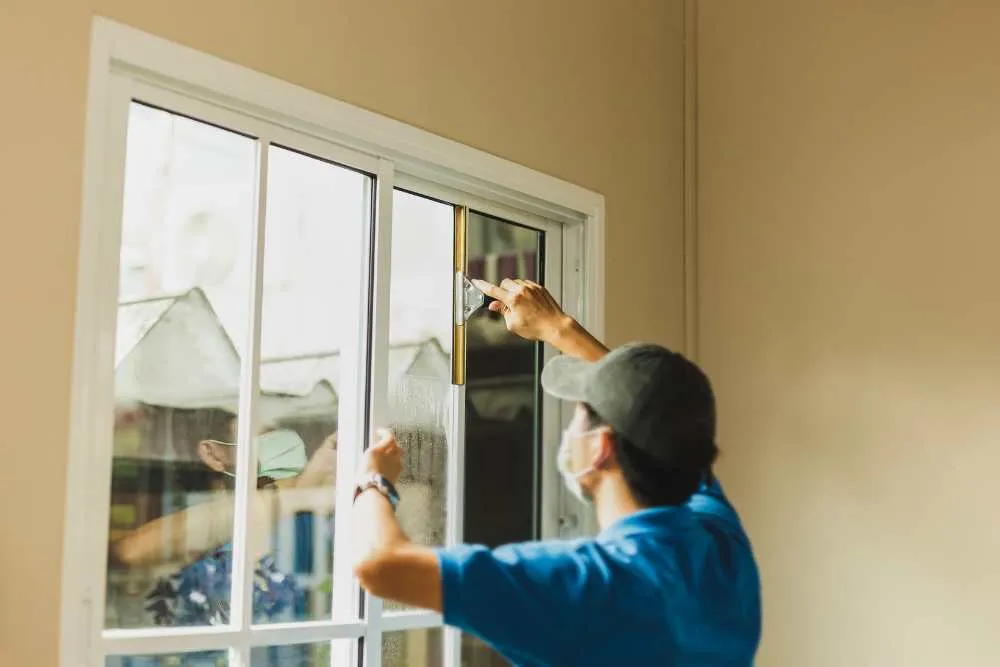Reflective window tints have become increasingly popular among both residential and commercial property owners, thanks to their excellent ability to block UV rays, reduce glare, and maintain privacy. By reflecting sunlight away, these tints help to reduce heat build-up and energy costs, making them an attractive option for environmentally-conscious consumers. In this article, we will explore the various types of reflective window tint available on the market today, offering insights into the best solutions for your specific needs.
1. Silver Reflective Window Tint
One of the most common types of reflective window tints is silver reflective window tint. Known for its high level of reflection, this tint offers excellent privacy and heat control. It is ideal for both commercial and residential applications where privacy is a concern, as the mirrored effect on the outside of the window makes it nearly impossible for anyone to see in. However, from the inside, you can still enjoy clear views of the outside world.
Benefits of Silver Reflective Window Tint:
- Blocks up to 99% of harmful UV rays.
- Provides excellent glare reduction.
- Reflects up to 85% of solar heat, making it a highly energy-efficient option.
- Maintains privacy during the day.
Common Uses:
This type of tint is frequently used in office buildings, apartment complexes, and commercial properties where both privacy and heat control are paramount.
2. Dual-Reflective Window Tint
Dual-reflective window tint offers a unique solution for those who want privacy and heat control without losing too much visibility from the inside. Unlike standard reflective tints, dual-reflective tints have a reflective exterior layer but a less reflective interior layer, ensuring better visibility and night-time privacy.
Benefits of Dual-Reflective Window Tint:
- Dual functionality: High reflectivity on the exterior, but low on the interior.
- Reduces up to 65% of total solar energy.
- Offers excellent UV protection.
- Improves indoor comfort by reducing heat and glare without compromising views.
Common Uses:
Ideal for homes and retail stores, this tint is perfect for spaces where maintaining outdoor views is just as important as privacy and energy efficiency.
3. Bronze Reflective Window Tint
For a more subtle and aesthetically pleasing option, bronze reflective window tint offers similar benefits as silver reflective tint but with a warmer tone. The bronze hue blends well with natural surroundings and is often preferred for residential properties where a softer appearance is desired.
Benefits of Bronze Reflective Window Tint:
- Adds a warm, neutral tone to windows, enhancing exterior aesthetics.
- Reflects up to 70% of solar heat and blocks UV rays effectively.
- Provides daytime privacy while maintaining a comfortable indoor temperature.
- Less harsh reflective surface than silver tints, making it more visually appealing.
Common Uses:
Popular in residential homes, particularly for sunrooms, patios, or south-facing windows that are exposed to prolonged sunlight.
4. Low-E Reflective Window Tint
Low-emissivity (Low-E) reflective window tints are designed to control heat gain and loss through windows. This innovative tint uses metallic coatings to reflect long-wave infrared energy (heat) back into the room during the winter, while reflecting solar energy outward during the summer.
Benefits of Low-E Reflective Window Tint:
- Highly energy-efficient: Helps reduce both heating and cooling costs.
- Provides excellent UV and glare reduction.
- Reduces the need for HVAC usage, contributing to lower utility bills.
- Environmentally friendly, as it helps to lower overall energy consumption.
Common Uses:
Low-E tints are best for climates with extreme temperature fluctuations, such as northern regions with cold winters and hot summers. They are commonly installed in homes, schools, and office buildings to optimize energy efficiency year-round.
5. Ceramic Reflective Window Tint
Ceramic reflective window tint is a premium option that combines reflective properties with advanced ceramic technology. Unlike metallic tints, ceramic tints do not interfere with electronic devices such as mobile phones, GPS, and radios, making them an ideal choice for both homes and cars.
Benefits of Ceramic Reflective Window Tint:
- Non-metallic, non-conductive properties that do not disrupt electronic signals.
- Blocks up to 99% of UV rays and reduces glare.
- Maintains excellent clarity and transparency, allowing for natural light to enter while blocking heat.
- Highly durable and resistant to scratches and fading.
Common Uses:
Due to its non-interference with technology, ceramic reflective window tint is a popular choice for automotive applications as well as high-end commercial buildings.
6. Neutral Reflective Window Tint
For those seeking minimal color distortion, neutral reflective window tint provides excellent UV protection and heat rejection without significantly altering the appearance of the windows. This tint has a subtle reflective layer that still offers privacy and solar control but with less visual impact compared to more traditional reflective tints.
Benefits of Neutral Reflective Window Tint:
- Preserves natural window aesthetics while offering heat and UV protection.
- Reduces solar heat gain by up to 50%.
- Perfect for buildings in scenic locations where maintaining clear views is important.
- Offers moderate daytime privacy without a highly reflective exterior surface.
Common Uses:
Often used in homes with modern or minimalist designs, corporate offices, and retail storefronts where maintaining building aesthetics is critical.
7. Reflective Safety and Security Window Tint
Reflective window tint doesn’t just have to be for privacy and heat control; it can also be paired with safety and security features. Reflective safety and security window tints are designed with thicker films that add shatter resistance to windows. This feature is particularly useful for properties in hurricane-prone areas or locations with high risks of vandalism or break-ins.
Benefits of Reflective Safety and Security Window Tint:
- Adds an additional layer of protection by strengthening windows against impacts.
- Reflective surface provides daytime privacy while improving energy efficiency.
- Reduces the risk of glass shattering, making it safer during storms or accidents.
- Maintains high levels of UV protection and heat rejection.
Common Uses:
Choosing the Right Reflective Window Tint for Your Needs
When deciding on the best reflective window tint for your home or business, consider the following factors:
- Location: Properties in hot climates may benefit from tints with higher heat rejection, while those in temperate climates may prioritize UV protection or privacy.
- Aesthetic Preferences: The appearance of the tint can have a significant impact on the overall look of your property. Choose a tint that complements your architectural style.
- Purpose: Whether your goal is to enhance privacy, improve energy efficiency, or provide additional security, there is a reflective window tint that will meet your needs.
By evaluating these factors, you can choose the perfect reflective window tint that offers the right balance of functionality and aesthetics.



